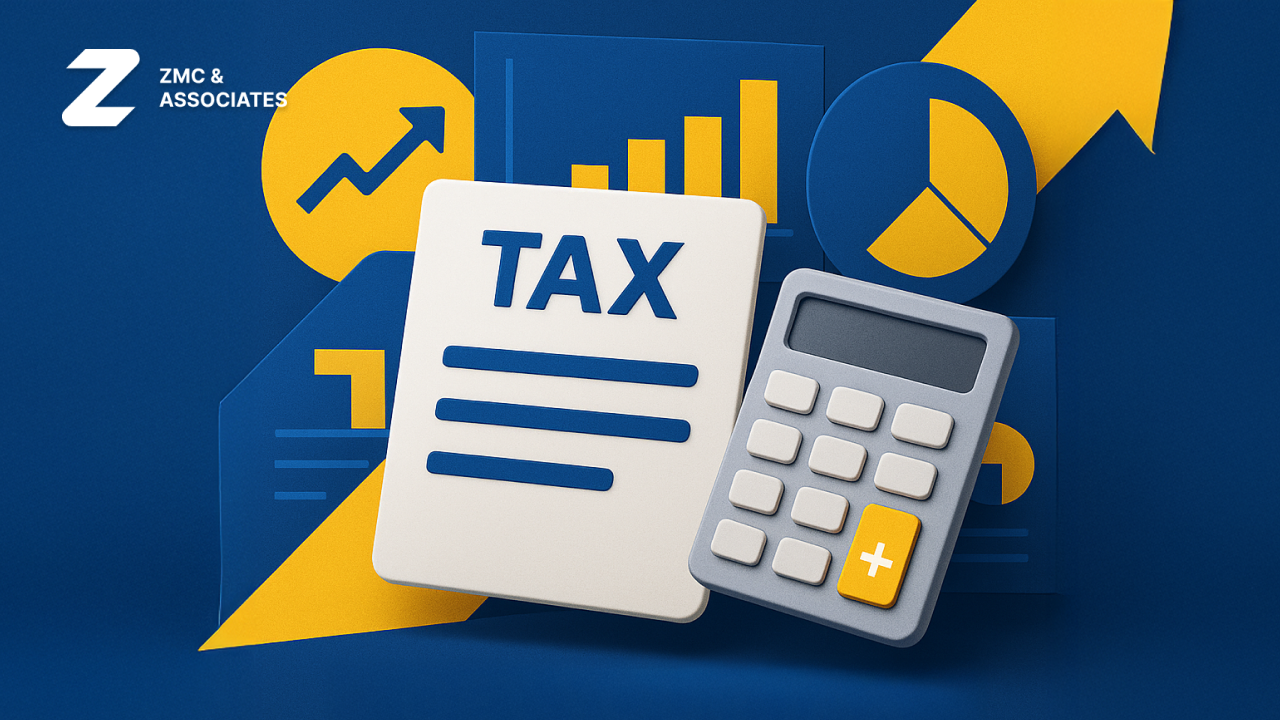July 29, 2025

Nathan Madill, CFP, APA, IAR | President
After months of intense negotiations, a sweeping new tax and spending bill was approved by Congress and signed into law by President Trump on July 4th. This comprehensive budget legislation is far-reaching, making many parts of the Tax Cuts and Jobs Act permanent, raising state and local tax exemptions, extending estate tax limits, and much more. The bill attempts to offset some of these provisions with targeted spending cuts in key areas such as Medicaid.
This legislation matters because while trade policy has dominated headlines over the past several months, tax and spending policy in Washington has been a growing source of uncertainty for many years. Although there is political disagreement regarding the direction of this new budget, it does remove the possibility of a “tax cliff” from the table—a situation where tax policy could have changed dramatically if key provisions had expired at the end of this year.
On an individual level, taxes directly affect many aspects of financial planning, and the specific provisions in this tax bill have immediate implications for household finances. From an economic perspective, many investors also worry about the level of government spending, the growing national debt, and other factors that have weighed on markets over the past two decades.
There are many angles from which to view this recently passed budget. What do investors need to know when it comes to their own financial plans, and what does it mean for markets in the years to come?
The Tax Cuts and Jobs Act Rates Are Now Permanent

The new tax bill, dubbed the “One Big Beautiful Bill” by the administration, extends and expands several key aspects from the 2017 Tax Cuts and Jobs Act (TCJA) that were set to expire. It also introduces new measures that provide additional benefits to taxpayers, which are only partially offset by spending cuts in other areas. Here are some of the major provisions that may affect households:
- Current TCJA tax rates and brackets are now permanent. They were originally set to expire at the end of 2025.
- The standard deduction increases to $15,750 for single filers and $31,500 for joint filers in 2025.
- There is an additional $6,000 deduction for qualifying seniors (sometimes referred to as a “senior bonus”) that phases out for gross incomes exceeding $75,000. This provision expires in 2028.
- The alternative minimum tax exemption is now permanent. It also increases phaseout thresholds to $500,000 for single filers, which will be indexed for inflation in the future.
- The child tax credit rises from $2,000 to $2,200 per child, with future adjustments indexed to inflation to maintain purchasing power over time.
- The state and local tax (SALT) deduction cap increases to $40,000 from the previous $10,000 limit, with annual increases of 1% through 2029. It is then scheduled to revert back to $10,000 in 2030.
- A deduction for tip income capped at $25,000 annually for workers earning less than $150,000, effective through 2028.
- Some green energy tax credits are repealed, including those for electric vehicles and residential energy efficiency credits.
- The federal debt limit increases by $5 trillion. This will prevent Congress from having to debate and approve debt limit increases for some time, reducing political uncertainty.
- For businesses, the bill expands tax breaks designed to encourage domestic investment and job creation.
2025 Key Individual Tax Changes: Before and After Comparison
To better understand the scope of these changes, here’s a detailed comparison of what taxpayers can expect under the old law versus the new provisions:
| Tax Provision | Old Law for 2025 | New Law for 2025 |
|---|---|---|
| Standard Deduction | $15,000 single; $30,000 married filing jointly | $15,750 single; $31,500 married filing jointly |
| Bonus Deduction for Older Adults | $1,600 for ages 65 and older | $7,600 for ages 65 and older |
| State and Local Tax Deduction (SALT) | $10,000 limit | $40,000 limit for 2025, increasing by 1% per year through 2029; reverts to $10,000 in 2030 |
| Child Tax Credit | Max credit $2,000 per child; refundable portion $1,700 | Max credit $2,200 per child; refundable portion $1,700 |
| Tax on Tips | All tips taxable | Deduct up to $25,000 per year from 2025 through 2028 |
| Overtime Pay | All overtime pay taxable | Deduct up to $12,500 per taxpayer from 2025 to 2028 |
| Auto Loan Interest | Not deductible | Deduct up to $10,000 of annual interest on new loans from 2025 through 2028 |
| Trump Accounts for Child Savings | None | One-time $1,000 credit to account per child born between 2025 through 2028 |
| Charitable Deduction for Non-Itemizers | None | $1,000 single; $2,000 married filing jointly |
These and many other changes maintain the relatively low tax environment that has characterized the past several decades. As the accompanying chart shows, current tax rates remain well below the peaks experienced during much of the 20th century, when top marginal rates exceeded 70% and sometimes reached above 90% during wartime periods.
Growing Concerns Over Fiscal Deficits

Tax policy and government deficits are two sides of the same coin, because tax cuts reduce government revenues, which then need to be offset by either lower spending or increased borrowing. However, most government spending is allocated to entitlement and defense programs that are politically difficult to change. According to the Department of the Treasury, in 2025, 21% of government spending goes to Social Security, 14% to Medicare, 13% to National Defense, and 14% to paying interest costs on the existing national debt.
It’s no surprise, then, that government borrowing has increased persistently over the past century and will likely continue to do so. The Congressional Budget Office, a non-partisan agency that supports Congress, estimates that this new tax and spending bill will add $3.4 trillion to the national debt over the next decade. This comes against the backdrop of a federal debt that already exceeds 120% of GDP, or $36.2 trillion, which amounts to approximately $106,000 per American.
Unfortunately, there are no easy solutions to this challenge, especially because this remains a contentious political topic. On one hand, tax cuts can stimulate economic growth, which may help offset revenue losses through increased economic activity. On the other hand, Washington has a poor track record of balancing budgets even when the economy is strong. The last balanced budgets occurred 25 years ago during the Clinton years, and 56 years before that during the Johnson administration.
It’s also important to remember that there has not always been an income tax in the United States. The modern income tax system began with the 16th Amendment in 1913, which applied modest rates to relatively few Americans. The system expanded dramatically during the Great Depression and World War II, with top rates reaching 94% by 1944. The post-war period brought various reforms, including President Reagan’s Tax Reform Act of 1986, which simplified the tax code and lowered rates.
The situation has changed significantly in the intervening years. As the accompanying chart shows, individual income taxes now represent the primary source of federal revenue. Social insurance taxes, also known as payroll taxes, are withheld from wages and help pay for Social Security, Medicare, unemployment insurance, and other programs. Other sources of revenue are much smaller in proportion and include corporate taxes, which were reduced by the TCJA, and excise taxes, such as tariffs.
For investors, tax policies can certainly have direct implications for financial plans and portfolios. From a macroeconomic perspective, however, fiscal implications have more limited effects. Over longer periods, higher debt levels can influence interest rates and inflation expectations. While these factors have been relatively elevated in recent years, many of the worst-case scenarios have not yet materialized. The key for long-term investors is to maintain diversified portfolios that can perform across different fiscal and economic environments, rather than reacting to policy changes alone.
The Bill Continues the Higher Estate Tax Exemption Limit

One set of provisions that would have been at the center of a tax cliff involves the estate tax exemption. The TCJA doubled these limits, which were scheduled to revert to previous levels this year. However, the passage of the new tax bill makes these higher exemptions permanent, further increasing the threshold to $15 million for individuals and $30 million for couples in 2026.
While it may seem like estate taxes only apply to higher net worth households, the reality is that all families must consider how assets can be passed to future generations. This requires a holistic approach that integrates estate planning, tax efficiency, philanthropy, and long-term family wealth preservation goals. It’s also important to keep in mind that individual states can impose estate taxes with exemption thresholds that are less favorable than the federal level.
The Bottom Line
The new spending and tax bill extends and expands the current low-tax environment. For investors, a properly constructed financial plan is designed with these tax provisions in mind. When it comes to growing deficits and the national debt, it’s important not to react with our portfolios, but to maintain a longer-term perspective.
For illustrative purposes only. The information contained herein has been obtained from sources believed to be reliable, but is not necessarily complete and its accuracy cannot be guaranteed. No representation or warranty, express or implied, is made as to the fairness, accuracy, completeness, or correctness of the information and opinions contained herein.



